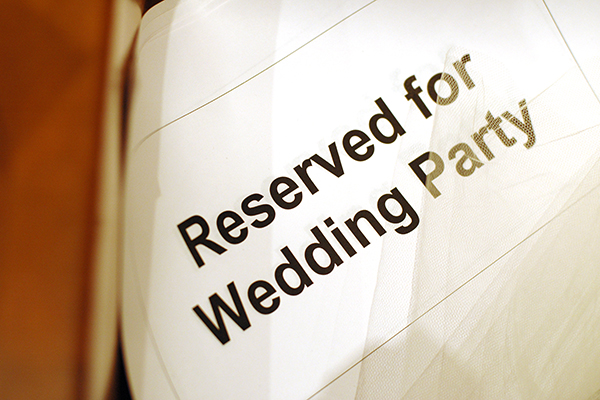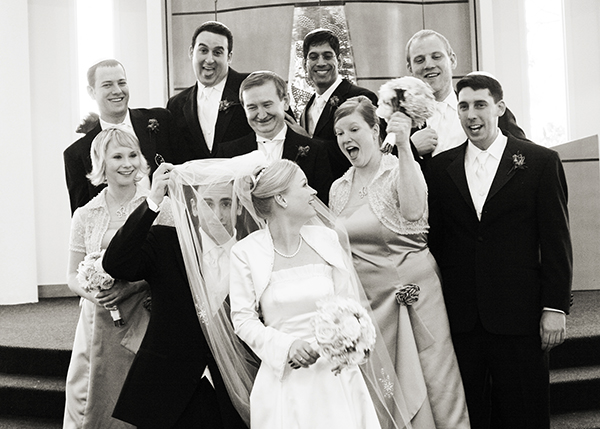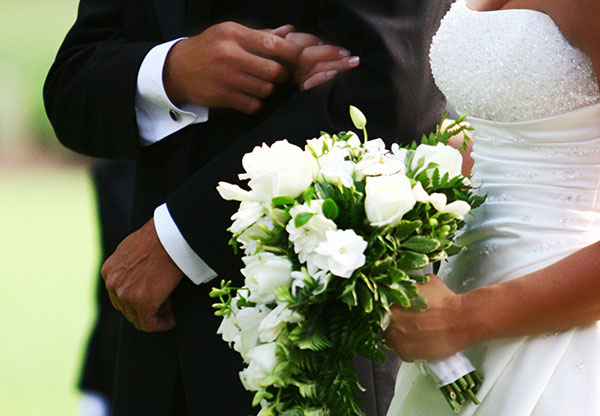Fujfilm GFX 50S | ISO 12,800 | 1/90 sec | F2.8 | GF 63mm F2.8 R WR
Photo: Dan Bracaglia
Most people recognize that ISO establishes a connection between exposure and image lightness. As we saw in part one, ISO only connects the input and the JPEG output, without specifying anything what should happen in-between. The important takeaways from the previous article are:
- ISO relates exposure to final image lightness by whatever means the manufacturer choses
- ISO is not just analog amplification, and doesn’t dictate what happens at the Raw level
This provides plenty of freedom for manufacturers to use different combinations of analog amplification and tone curve, so long as a given exposure results in the expected lightness.
This is important because analog amplification can help reduce noise but it also reduces the dynamic range that gets retained. So it can sometimes make sense to keep amplification low and do more of the lightening using digital processing, rather than reducing the dynamic range of the images you’re capturing.
Tailoring the highlight response of JPEGs
Before the 2006 definition of ISO was adopted, cameras used the same tone curve for each ISO setting and added a stop of amplification each time you changed the ISO setting (in part due to lack of processing power). The following diagram is based on the tone curve and measured lightness levels from an Olympus camera.
 |
| Before 2006 most cameras did increase lightening by increasing analog amplification with each ISO step. They used the same tone curve for all ISO settings. |
Once the ISO definition changed, it allowed the Olympus E-620 and the models up to the present day to use the base level of amplification but with ISO 200 exposures. This new ISO 200 mode was similarly noisy to the one on the older cameras, despite using lower analog gain – because most of the noise was photon shot noise, which directly relates to the illumination levels and exposure, not amplification. However, this new way of working afforded an extra stop of highlight capture that was previously amplified to the point of clipping.
If you ignore the exposure implications and give ISO 100 and ISO 200 modes the same exposure, you end up with identical values in the Raw files.
 |
| After 2006, this changed. Olympus, for instance, used ISO 200 levels of exposure but without any increase in amplification. This provided an extra stop of highlight capture, with no significant increase in noise, compared to the old ISO 200. All the higher ISOs used the same tone curve.
Many of its cameras indicate that ISO 100 is an expansion, or ‘pull’ mode, despite being the same as the ISO 100 setting on its older models. |
All the ISO settings above 200 use the same tone curve, along with one stop less amplification than in older models. Interestingly, the ISO 100 mode is sometimes listed as an expansion mode on some Olympus cameras, because it clips highlights sooner than the other ISO modes (despite being exactly the same as the ‘full’ ISO 100 mode on older models).
DR Modes
Taking this logic further, some cameras have Dynamic Range modes that combine less analog amplification with tone curves that incorporate more highlight information.
Canon’s Highlight Tone Priority and Ricoh’s Highlight Correction DR modes both do this: using one stop less amplification than standard mode to preserve the highlight data that would otherwise be amplified to clipping. The side-effect of this is that the lowest available ISO setting goes up by a stop when you engage these modes.
Fujifilm takes this a step further, offering three Dynamic Range settings. The table below shows the relative levels of amplification and how they combine with exposure levels for the different DR modes:
| DR100 | DR200 | DR400 | |
|---|---|---|---|
|
ISO 200 |
1X | — | — |
|
ISO 400 |
2X | 1X | — |
| ISO 800 exposure |
4X | 2X | 1X |
| ISO 1600 exposure |
8X | 4X | 2X |
| This table shows a simplification of the amplification level being applied at each DR mode and ISO setting. The colored boxes are the modes shown in the next diagram. | |||
Another way of looking at it is that the DR modes’ tone curves require less and less exposure to correctly render middle gray, so are considered to be higher ISO settings.
 |
| This shows the ‘base ISOs’ of the three DR modes, which require less and less exposure to achieve the expected image lightness but keep amplification at its minimal setting, capturing one or two additional stops of highlight data.
Because most of the noise in an ‘ISO 800’ shot comes the randomness of the light you captured (which is dictated by the exposure used), there’s very little noise difference between using DR100 and DR400 modes with an ISO 800 exposure, but the DR400 shot has two stops more highlight information. |
Because there’s no connection between ISO and amplification, and because the sensors it uses are highly ISO invariant, Fujifilm is able to offer a series different ISO modes with the sensor’s amplifier in its ‘base ISO’ state.
This can be useful for Raw-shooting photographers: the DR200 and DR400 modes essentially let you expose one or two stops to the right (ie shifting exposure to include highlights that would otherwise be lost), while maintaining a comprehensible preview image. Snapping a quick DR400 mode image lets you check which additional highlights will be captured, without the rest of the image becoming too dark to interpret.
High ISOs without additional amplification
At higher ISOs, there are some brands that stop applying additional amplification after a certain point, and produce all subsequent ISO settings using digital processing.
The pros and cons of amplificationMost cameras can capture their widest dynamic range at ‘base ISO’: the setting with the least amplification. Adding amplification helps diminish the impact of any electronic noise added after the amplification step (downstream read noise), and boosts the output of the sensor to a level that’s well matched to the analogue to digital converter (ADC). However, the sensor response remains unchanged, and any additional amplification beyond this ‘base’ level also pushes some of the initially captured signal to the point where it clips, this reduces the available dynamic range of the camera by up to a stop with every additional doubling of amplification. In many modern sensors, the amount of downstream read noise is so low and the precision of the ADC sufficiently high that there’s only a small difference between the result you get from using a low amount of amplification, then lightening the results later, versus applying lots of amplification. This is a property we call ISO invariance (though should perhaps be called Amplification Invariance). Exploiting this characteristic by using a low amplification but with the exposure settings associated with a higher ISO setting has little noise cost and reduces the amount of highlight data that’s clipped. |
The very high ISOs are created either by doubling the captured values before storing them or by adding a metadata flag to indicate that everything should be lightened by a number of stops during processing. Sometimes this is done because sensors’ amplifiers have a maximum gain level they can deliver, but it’s equally true that there’s very little benefit to applying large amounts of analog gain.
The beneficial side effect of preserving highlights can be seen in the GFX 50S example at the top of the page: this isn’t a case of software trying to ‘recover’ highlights from partially clipped data, this comes from multiple stops of highlight data being preserved in the Raw file, just not used by the default tone curve.
Even on a camera that doesn’t do this, it shows the benefit for Raw shooters of selecting appropriate exposure settings then reducing the ISO setting for some low-light shots or times where you need a fast shutter speed. There’ll be little noise cost but highlights such as neon signs won’t be clipped.
All ISO settings from a single amplification level
At its most extreme, there have been cameras that only have a single level of amplification and then generate all their ISO settings from that state (though this is rare). For this to work, you’d need a highly ISO invariant sensor, which wasn’t the case in the one instance we’re aware of.
ISOs in Log mode
Strictly speaking, most cameras’ Log modes stray outside the ISO standard, since they’re not in the sRGB colorspace. But, presumably to avoid your camera having to present you with a a totally different lightness scale, most cameras continue to use the ‘ISO’ terminology in Log mode.
In most cameras, when you switch from a standard color profile to Log mode, the minimum available ISO jumps significantly. This isn’t necessarily because more amplification is being applied, a lot of it will be because the Log tone curve is so flat.
Just like the DR modes we discussed above, if you want to capture more highlight information but you’re already at your lowest amplification level, the only option is to reduce your exposure and brighten the result using a more dramatic tone curve. This is essentially what’s happening in Log modes: the super-flat Log gamma curves require less exposure to deliver middle grey, so are considered higher ISO settings.
This is why, for instance, the Panasonic S1H’s minimum ISO changes dramatically when you change into one of its Log modes, or even into one of its color modes with a flatter tone curve:
| Panasonic S1H color mode: | Minimum ISO (expansion turned off) |
|---|---|
| Standard | ISO 100 |
| Cinelike D2 | ISO 200 |
| Hybrid Log Gamma | ISO 400 |
| V-Log | ISO 640 |
If you shoot them all at the same exposure values, they all clip at the same point, since they’re all based on the camera’s lowest amplification settings. The change in the available ISO settings is purely reflects that their tone curves accommodate an extra 1, 2 and 2.67EV of additional highlights, respectively, compared to Standard mode.
However, that’s not always the case. When you engage the S-Log modes on Sony cameras, there’s an increase in minimum ISO but this jump is the effect of the flatter tone curve combined with an increase in amplification. The size of the jump from standard mode to S-Log2 changes between cameras, but the change in tone curve accounts for 2.33EV of this shift: anything more than this comes from amplification.
 |
| Shifting from standard color mode to S-Log2 sees the ISO rating jump by at least 3EV on most Sony cameras. This 3 stop reduction in exposure doesn’t yield 3 stops of extra highlights, though: instead you only get 2.33EV of additional highlight capture because the analog amplification is also being increased (by 0.67EV on the a7R III, illustrated), presumably to overcome a little noise in the deep shadows.
As if to emphasize how far we are from the ISO standard at this point, this produces a JPEG in which a middle gray target would appear darker than the standard 118, 118, 118 RGB value. Instead the camera meters to expose middle gray at what videographers would consider IRE 32. |
With this in mind, it’s always worth being careful of any camera where the ISO doesn’t increase when you shift to Log mode: it almost certainly means that some of these ISO settings are ‘pull’ expansion modes, which will prematurely clip highlights.
EI: explicitly separating exposure from analog gain
Interestingly, some more recent video cameras – often the ones that shoot Raw video – offer an EI ‘Exposure Index’ mode. This uses the camera’s base amplification setting at all times, and combines this with the exposure values usually associated with a higher ISO.
It’s terminology that dates back to push-processing film, where you would use a different exposure index than the sensitivity of your film.
Explicitly separating amplification from exposure considerations might let photographers make more informed choices about how to use their cameras
This approach is essentially like generating all your ISO settings from a single amplification level, with the benefit that you gain an extra stop of highlights for each higher EI step (ie: one stop less exposure).
For now, we’ve not seen a stills/video camera explicitly use an EI approach to exposure. But as the two worlds converge, we wouldn’t rule it out. Explicitly separating amplification from exposure considerations might let Raw shooters in particular make more informed choices about how to get the most out of their cameras.
What’s next?
This article tries to show how different cameras exploit the flexibility of the ISO standard to provide different modes and features. Unfortunately, the JPEG-focused nature of ISO makes it difficult to apply this knowledge if you’re shooting in Raw. Because the standard doesn’t define what should happen to the Raw files at different ISO settings, it’s difficult to work out the optimal settings to use.
In a forthcoming article, we’ll look at our Science Editor’s proposals to move beyond the current ISO system. Specifically, a system that accounts for Raw and is able to better exploit modern sensor performance.
Again, thanks to bobn2 for his pre-publication check of this article to prevent overly casual use of the word amplification.
Articles: Digital Photography Review (dpreview.com)









You must be logged in to post a comment.